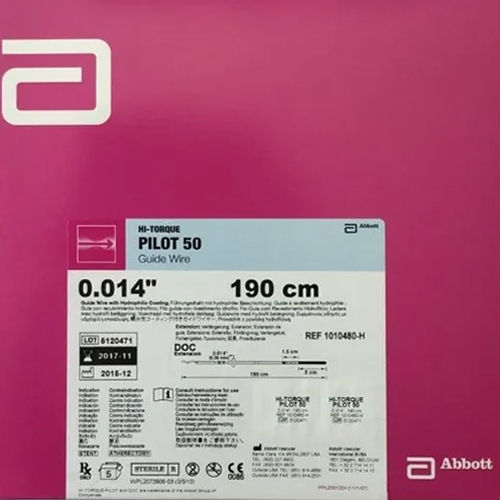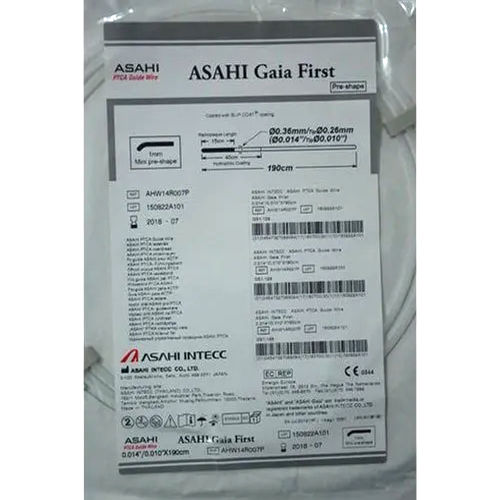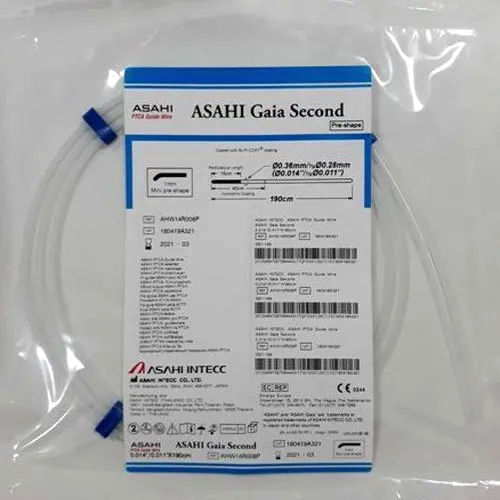Kaneka Crusade Dual Lumen Microcatheter Guide Wire
Product Details:
Kaneka Crusade Dual Lumen Microcatheter Guide Wire Price And Quantity
- 25500 INR/Piece
- 50 Piece
Kaneka Crusade Dual Lumen Microcatheter Guide Wire Trade Information
- 10000 Piece Per Week
- 4 Days
- Asia Australia Central America North America South America Eastern Europe Western Europe Middle East Africa
- All India
Product Description
In interventional procedures, a Crusade Dual Lumen microcatheter guide wire which combines a guide wire and a microcatheter is used to access and navigate tiny veins or particular anatomical regions. Its purpose is to support and make it easier to introduce additional medical equipment, like balloons, stents, or embolic agents, to the desired spot inside the body. A thin, flexible wire known as the guide wire serves as a passageway for the advancement of the microcatheter through blood vessels or other anatomical structures. It offers stability throughout the treatment and aids in guiding the microcatheter to the intended location.
Crusade Dual Lumen microcatheter wire is a tiny, flexible tube with a hollow interior. To get to the target spot inside the body, it can be advanced over the guide wire. Depending on the individual technique, the microcatheter enables the introduction of contrast agents, medicinal compounds, or the retrieval of samples. Crusade Dual Lumen Microcatheter guide wires are available in a variety of shapes, lengths, and diameters to accommodate varied treatments and anatomical needs. They are employed in numerous interventional disciplines, such as radiology, neurology, and cardiology. It is crucial to note that the models and characteristics of a given microcatheter guide wire might differ between manufacturers and may change over time. It is recommended to refer to the product documentation provided by the manufacturer or seek advice from healthcare specialists with experience in interventional procedures for accurate and up-to-date information on a specific microcatheter guide wire.
Product details
|
Manufactured By |
Kaneka |
|
Radiopaque Marker |
0.5 mm |
|
Wire Exit Port Marker |
0.017" |
|
Length |
140 cm |
|
Brand |
Crusade |
|
Material |
PTCA |
|
Automation Grade |
Manual |
|
Features |
Dual Lumen1 mm |
Frequently Asked Questions
Q: What is the purpose of a crusade dual lumen microcatheter guide wire?
A: During interventional operations, a crusade dual lumen microcatheter guide wire is used to access and move around small vessels or particular anatomical regions. It gives the microcatheter a path to travel along, enabling it to be advanced to the appropriate position inside the body. The distribution of medicinal substances, the recovery of samples, or other interventional techniques are made easier by the use of the guide wire and microcatheter together.
Q: What is the technique for using a crusade dual lumen microcatheter guide wire?
A: Typically, a tiny puncture or incision is used to implant the crusade dual lumen microcatheter guide wire into the body. Using imaging methods like fluoroscopy or ultrasound, the guide wire segment is moved via the vasculature or anatomical structures to the target region. The microcatheter is advanced over the guide wire to the appropriate site once the guide wire is in place. The microcatheter can then be used to carry out a variety of procedures, including the delivery of contrast agents, medications, or sample retrieval.
Q: What are the most important factors to take into account when choosing a crusade dual lumen microcatheter guide wire?
A: When choosing a crusade dual lumen microcatheter guide wire, it's crucial to take into account the particular procedure or anatomical area being targeted, the size and length of the wire and microcatheter, the necessary flexibility and compatibility with other tools or techniques used during the procedure. The radiopacity, trackability, and support capabilities of the guide wire are also crucial factors to take into account.
Q: Is it possible to reuse a crusade dual lumen microcatheter guide wire?
A: Crusade dual lumen microcatheter guide wires are typically single-use devices that are discarded following each surgery. The possibility of contamination or infection is decreased by this procedure, which also guarantees sterility.
Q: Where can I learn more about particular crusade dual lumen microcatheter guide wires?
A: It is preferable to refer to the product documentation that the manufacturer provides in order to get comprehensive and up-to-date information regarding specific crusade dual lumen microcatheter guide wires, including their features, indications, and usage instructions. The use of microcatheter guide wires can also be explained by medical professionals with experience in interventional procedures.







